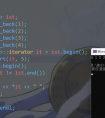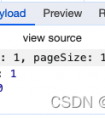前言:这篇文章我们继续进行C++容器类的分享——list,也就是数据结构中的链表,而且是带头双向循环链表。
一.基本框架
namespace Mylist{template<class T>//定义节点struct ListNode{ListNode<T>* _next;ListNode<T>* _prev;T _data;ListNode(const <T>& x = T()):_next(nullptr),_prev(nullptr),_data(x){}};template<class T>class list{typedef ListNode<T> Node;public://构造函数list(){_head = new Node;_head->_next = _head;_head->_prev = _head;}//析构函数~list(){iterator it = begin();while (it != end()){it = erase(it);}delete _head;_head = nullptr;}//数据个数size_t size(){iterator it = begin();size_t Size = 0;while (it != end()){Size++;it++;}return Size;}private:Node* _head;};}由于要满足存储任意类型的数据,所以我们必须要使用模版来进行定义。
迭代器
关于list类中的最难之处,就是迭代器了。
因为迭代器的原理即为指针,对于string和vector这种创建的对象的物理空间是连续的类来说,我们可以直接对迭代器进行“++”、“--”等数学运算。
而对于本质为链表的list来说,由于每个节点的物理空间都是随机创建,各个节点的地址并不连续,所以我们没法直接进行迭代器的数学运算,而需要对迭代器的各种功能进行重新定义,所以我们创建一个专门为迭代器服务的类:
//迭代器template<class T>struct ListIterator{typedef ListNode<T> Node;typedef ListIterator<T> Self;ListIterator(Node* node):_node(node){}//解引用T& operator*(){return _node->_data;}//前置++Self& operator++(){_node = _node->_next;return *this;}//后置++Self operator++(int){Self tmp(*this);_node = _node->_next;return tmp;}//前置--Self& operator--(){_node = _node->_prev;return *this;}//后置--Self operator--(int){Self tmp(*this);_node = _node->_prev;return tmp;}//不相等bool operator!=(const Self& it){return _node != it._node;}//相等bool operator==(const Self& it){return _node == it._node;}Node* _node;};随后在list类中将该类名重定义为iterator,便可正常使用迭代器了:
typedef ListIterator<T> iterator;iterator begin(){return _head->_next;}iterator end(){return _head;}这里值得注意的是,因为是带头双向循环链表,所以链表的开始即哨兵位的下一个,而结尾就是哨兵位。
但是现在的迭代器是存在问题的,它并不能实现对const修饰的数据的操作,所以我们还需要一个const迭代器。因为我们的普通迭代器就是用模版来实现的,所以这里可以直接通过模版来实现const迭代器:
//迭代器template<class T,class Ref>struct ListIterator{typedef ListNode<T> Node;typedef ListIterator<T,Ref> Self;//构造函数ListIterator(Node* node):_node(node){}//解引用Ref operator*(){return _node->_data;}//前置++Self& operator++(){_node = _node->_next;return *this;}//后置++Self operator++(int){Self tmp(*this);_node = _node->_next;return tmp;}//前置--Self& operator--(){_node = _node->_prev;return *this;}//后置--Self operator--(int){Self tmp(*this);_node = _node->_prev;return tmp;}//不相等bool operator!=(const Self& it){return _node != it._node;}//相等bool operator==(const Self& it){return _node == it._node;}Node* _node;};typedef ListIterator<T,T&> iterator;typedef ListIterator<T,const T&> const_iterator;这里有一个细节,因为T同时还要服务于Node类,所以不能直接对其进行修改,而是另用一个模版参数。
因为const对象与非const对象最大的不同之处在于对数据的访问,所以定义一个名为Ref(引用)的模版参数,来对解引用运算符重载函数进行改造。
二.常用操作
1.插入
先来看任意位置的插入,需要传入某个位置的指针pos:
//pos前插入void insert(iterator pos, const T& val){Node* cur = pos._node;Node* newnode = new Node(val);Node* prev = cur->_prev;prev->_next = newnode;newnode->_next = cur;cur->_prev = newnode;newnode->_prev = prev;}现在对于我们来说就是非常简单,测试如下:
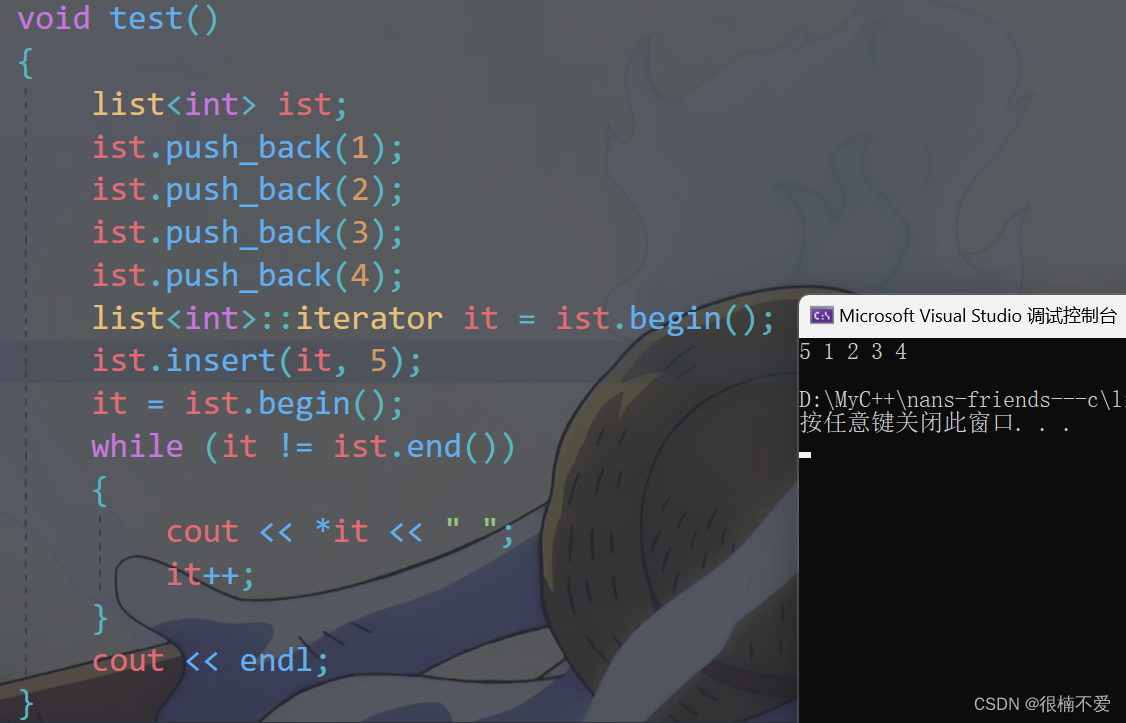
这里有一个小细节,如果我们插入的位置是第一个节点之前,由于it迭代器的指向并未改变,所以如果进行遍历,他就不会遍历出我们新插入的数据,所以需要更新一下it。
有了pos位置的插入之后,就可以用它来扩展头插和尾插:
//尾插void push_back(const T& x){insert(end(), x);}//头插void push_front(const T& x){insert(begin, x);}2.删除
我们同样先写出pos位置的删除:
//pos删除iterator erase(iterator pos){Node* cur = pos._node;Node* next = cur->_next;Node* prev = cur->_prev;next->_prev = prev;prev->_next = next;delete cur;return iterator(next);}由于删除会导致迭代器成为野指针,所以我们要对其进行更新, 测试如下:

同样由其扩展出头删和尾删:
//头删void pop_front(){erase(begin());}//尾删void pop_back(){erase(--end());}3.拷贝
和string和vector一样,list的拷贝也需要使用深拷贝,那么它的拷贝构造函数该怎么写?
同样是要开辟新的空间,需要一个自己的头结点,随后按照被拷贝的链表的数据进行尾插即可:
//拷贝构造list(const list<T>& lt){_head = new Node;_head->_next = _head;_head->_prev = _head;for (auto& e : lt){push_back(e);}}测试如下:
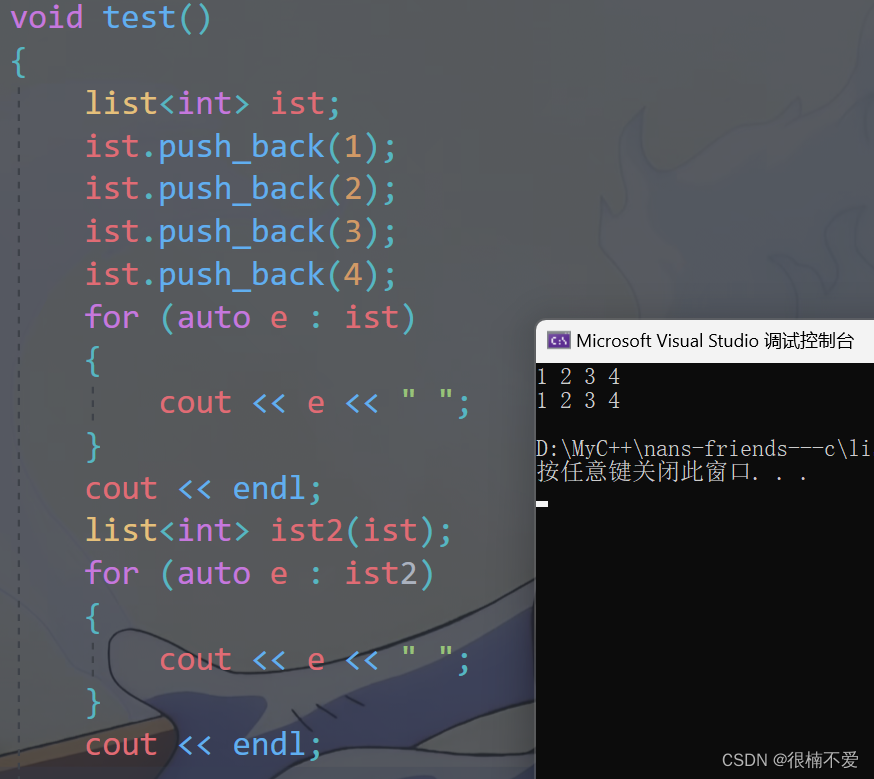
此外,还有“=”运算符重载的方法:
//交换void swap(list<T>& it){std::swap(_head, it._head);}//=运算符重载list<T>& operator=(list<T> lt){swap(lt);return *this;}这里仍然是巧妙的运用swap函数,因为lt是一个临时拷贝,有自己的空间和地址,所以直接让两者进行交换,lt在退出函数时即被销毁,而拷贝者则继承了它的地址空间,测试如下:
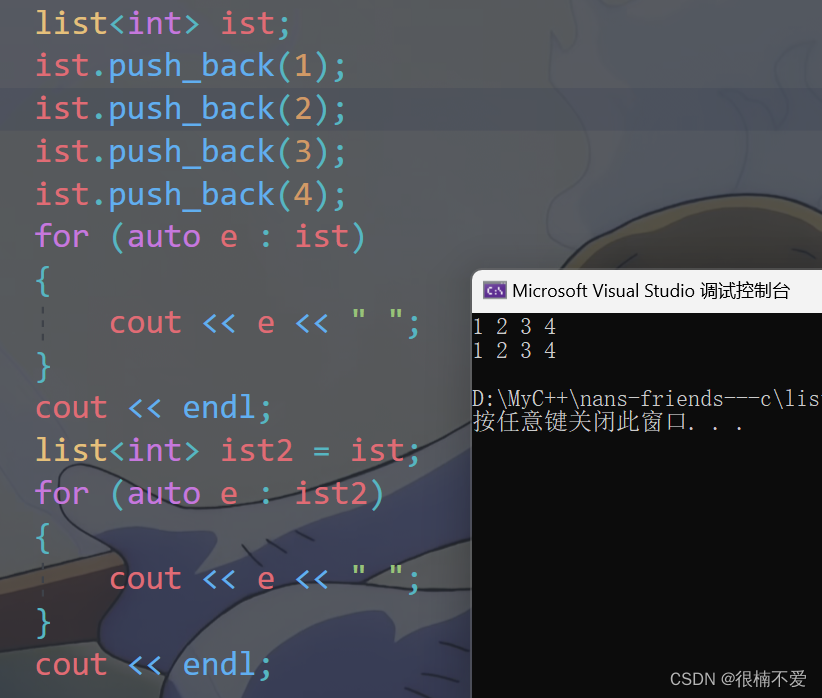
总结
关于list类的基本知识就分享到这里啦。
因为与string和vector都存在很多相似之处,所以建议将这三者放在一起学习。
喜欢本篇文章记得一键三连,下期再见!
